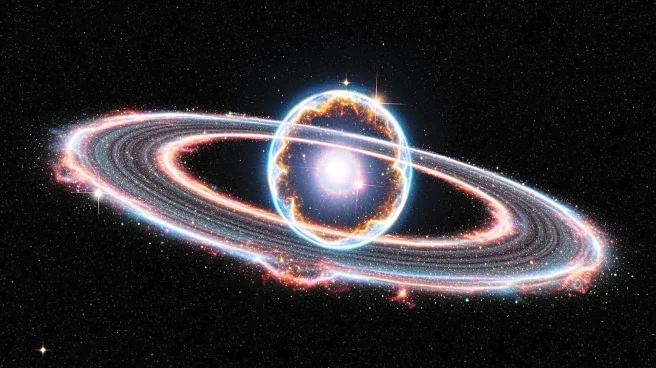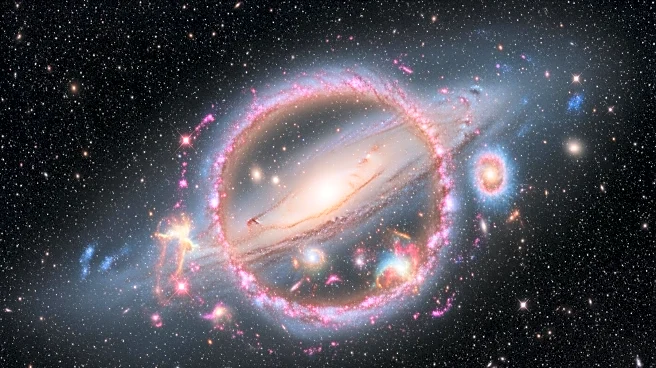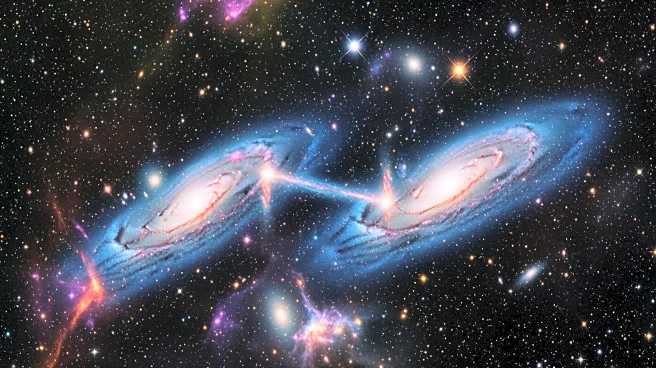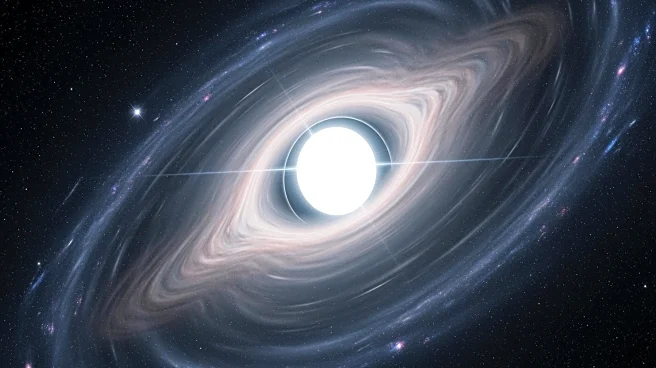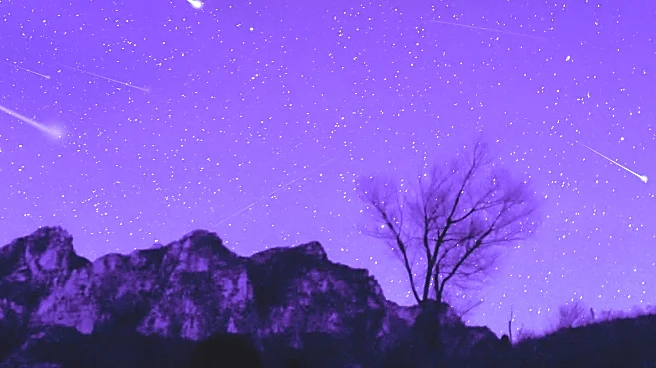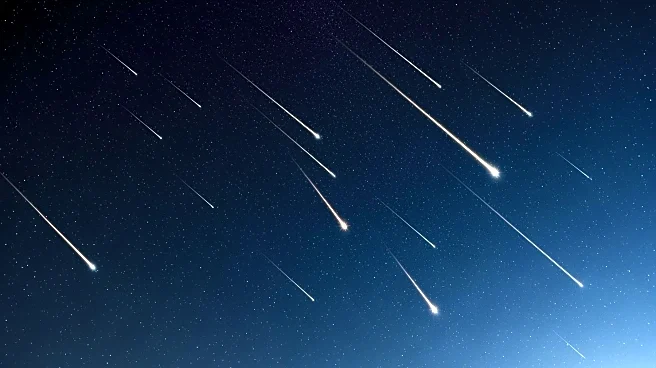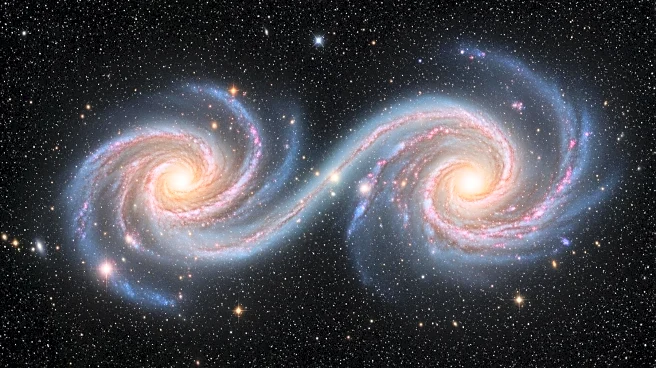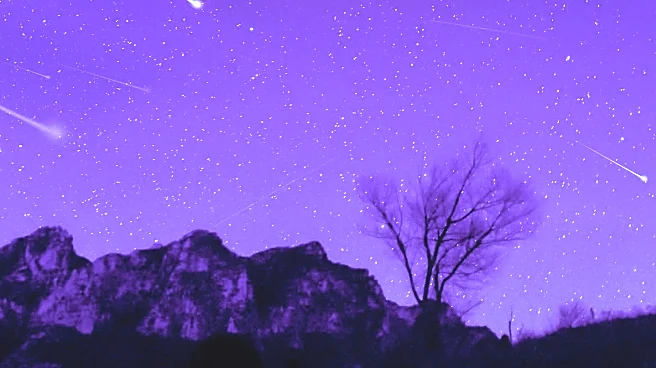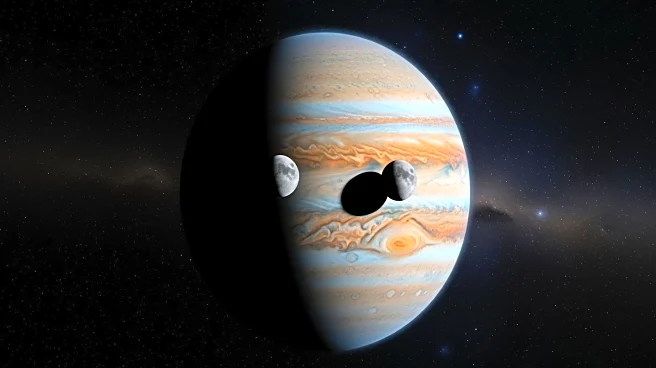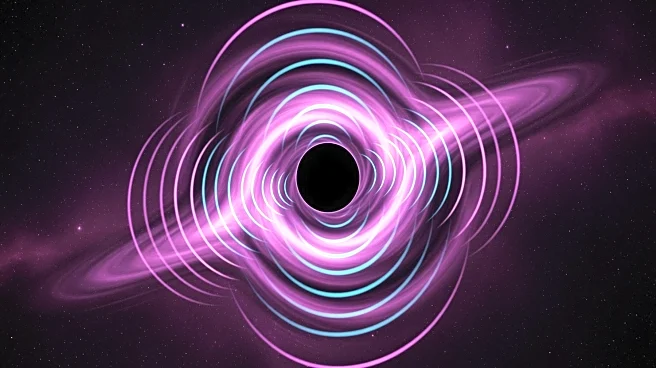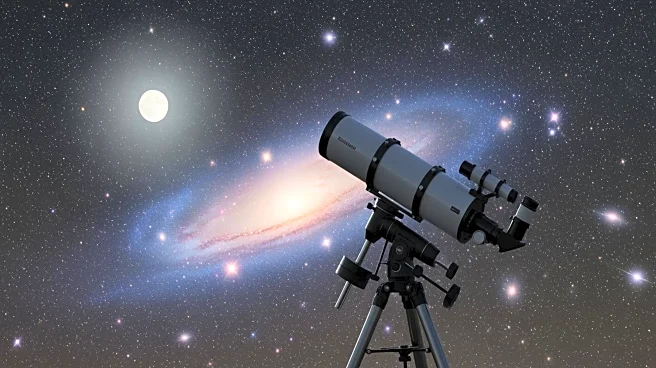What's Happening?
The Hubble Space Telescope has captured a remarkable image of the barred spiral galaxy NGC 6951, located 70 million light-years away in the constellation Cepheus. This galaxy is known for its stellar activity
and has become a favorite among astronomers. The image reveals the galaxy's spiral arms, adorned with red nebulae glowing with hydrogen gas, a crucial element for star formation. A bar of stars crosses the core of NGC 6951, channeling gas inward and creating a circumnuclear starburst ring about 3,800 light-years wide. This ring is a site of intense star formation, with over 80 possible star clusters identified, many of which are less than 100 million years old.
Why It's Important?
The observations made by the Hubble Space Telescope provide critical insights into the processes of galaxy formation and evolution. By studying the starburst ring in NGC 6951, astronomers can better understand how galaxies recycle their material through generations of star birth and death. This knowledge is essential for comprehending the lifecycle of galaxies and the conditions that lead to star formation. The data collected by Hubble contributes to the broader understanding of cosmic phenomena and aids in refining models of galactic dynamics.
